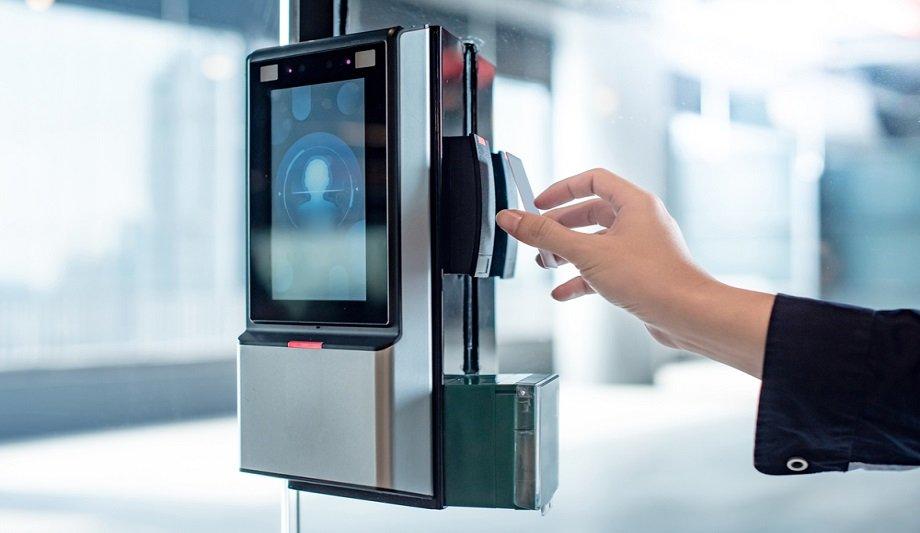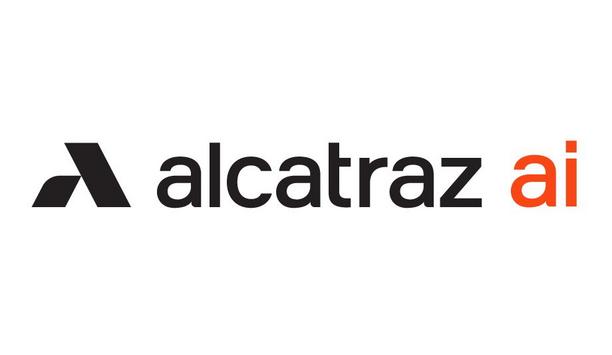The outlook for advancements in door security solutions is proving to be an extension of the positive trends that have emerged over the past few years and that continue to evolve in exciting new ways. That’s a good sign as we make our way along the road toward an ever-safer world.
Improvements in a hybrid workforce
Here’s what we’re seeing: More and more companies are rethinking the office space and how electronic access control (EAC) security and data can help better serve the hybrid workforce. More colleges and universities are adopting mobile credentials to meet the expectations of students. And we’re seeing EAC being integrated into more applications that go beyond the traditional doorway.
Among K-12 schools, the current trend surrounds ensuring classroom doors are secured with proper locksets
Among K-12 schools, the current trend surrounds ensuring classroom doors are secured with proper locksets, retrofitting where required, and reinforcing training for safe operation. We continue to experience steady demand for specialty doors and touchless openings in the healthcare industry. And we’re seeing an ever-increasing emphasis across the board on the aesthetics, sustainability, and resilience of door security products.
Rethinking the workspace
The use of electronic access control and security management infrastructure as a mechanism to do non-security tasks also continues to expand. One of the trends in building design is rethinking how people need to use workplace settings.
Today, there’s less need to come into the company office and sit at a desk or cube to answer emails and use the computer. Instead, the focus is on designing spaces that facilitate collaboration and face-to-face interaction.
Electronic access control and data
This rethinking of spaces means that security professionals must work closely with architects and end users to assess how many people may likely be coming in during a typical week.
EAC data can shed light on these patterns and improve the planning process to identify which technologies are the best fit for a facility and that support the primary mission of the organisation using that facility.
Energy efficiency
Access control data capture is helping to make building management platforms smarter for improving comfort
Integration of EAC with other security systems is also trending higher. In addition to managing people entering and exiting openings, access control provides the kind of data and interaction that’s useful for developing apps to schedule hoteling (reserving unassigned desks), meeting rooms, and locker assignments.
Access control data capture is helping to make building management platforms smarter as well as improving comfort, wellness, and energy efficiency by controlling HVAC, window coverings, and lighting.
Mobile Credentials on the rise
Mobile access is another trend that continues to skyrocket. Outside the hospitality space, we see this being driven primarily by student bodies at the university and college levels. Other sectors are recognising this flexibility as well, for the convenience it provides the user and for administrators responsible for issuing and modifying credentials, which can be implemented quickly and remotely.
There are over 270 million smartphones in the U.S. currently, and people use them for everything today, whether it’s paying for an item with a mobile wallet or tapping a reader to gain access somewhere. Most of us always have our phones with us, so it’s very rare that we forget or lose them as we might with a keycard or brass key. We’re also far less likely to lend our phones to someone else to make a purchase or get in a door.
Access-controlled lockers
Speaking of purchases, the “amazonification” of so many businesses in the past three years is fueling the steady rise of package deliveries to college dormitories. The same applies to office buildings and multi-family units. This means greater demand for innovative access-controlled lockers to receive the deliveries, secure them, and ensure privacy.
Along with lockers, EAC, mobile, and intelligent locks have been making their way into more non-traditional openings
This is why you’re seeing a proliferation of locker systems like Luxer One in residence halls, offices, and other locations today. Along with lockers, EAC, mobile, and intelligent locks have been making their way into more non-traditional openings, including server cabinets, medication drawers and lockers, and critical unmanned infrastructure such as traffic control cabinets that dot nearly every intersection.
K-12 security
One of the best options for preventing loss of life during an active shooter event is to ensure that doors are locked and remain secured. The technology barrier to keeping kids and teachers safe is extremely low.
If you can keep a door to a classroom or collaboration space secured, you can keep an intruder out until help arrives. And we’re not talking about needing new technologies to get the job done right, although we certainly continue to innovate them even for traditional door hardware.
Automatically locking doors
Classroom doors that require a key to lock and unlock them from the outside have been around for years. Additional models automatically lock when the door is closed, allowing the teacher to lock the door from either side and/or have an indicator to verify it’s secured.
Of course, for safety and code compliance, free egress is always necessary so everyone can get out in an emergency.
Lockset solutions
The trend now is about ensuring the right classroom lockset solutions are in place and that faculty and staff are updated
There should also be accommodations that ensure first responders and other authorised personnel can gain entry when necessary.
The trend now is about ensuring the right classroom lockset solutions are in place (such as Corbin Russwin or SARGENT Classroom Intruder or Storeroom function locks), and that faculty and staff are well-versed and consistently updated on proper operation and safety procedures.
Specialty doors and access convenience for healthcare
Touchless (a.k.a. no-touch) and low-touch access technologies were developed as convenient opening solutions well before the pandemic. It’s logical then that demand has accelerated and continues to do so.
Low-touch activation takes just an easy bump of a button with a forearm, elbow, or hip, or the press of a foot pedal. With fully touchless technology, a sensor automatically opens the door on approach. For restricted environments, a quick scan of a badge, phone, or fob activates the sensor. We’re also supplying more anti-microbial/anti-viral coating options today as part of further efforts to prevent the spread of germs in healthcare environments.
Sliding and pocket doors
In addition, there’s a bigger push in healthcare for sliding and pocket doors that are typically easier to open, save space by eliminating the radius required for a swinging door and feature newer insulating materials that make them more energy efficient and keep rooms quieter, more private, and more comfortable.
Plus, they have a greater aesthetic quality to them with wood and other decorative finishes that are available.
Architectural aesthetics
The key is designing security and architectural hardware so they work in harmony and enhance the user experience
When we think about trends, fashion and interior design often come to mind. Aesthetics apply to door openings as well and have become increasingly important to the architectural community and building industry. Just as fashion keeps upping the game by changing color palettes, textures, and patterns, so do the interior design world, doors and door hardware included.
Retail stores often set the bar for interior design and inspire other commercial settings to follow. That’s why our company continuously invests in developing rich lines of styles, finishes, textures, and color palettes for everything from levers and pulls to specialty doors and glass door hardware solutions. The key is designing security and architectural hardware so they work in harmony and enhance the user experience within a space.
Glass
Glass is another trend that’s seeing continued growth due to its clean look, fire resistance, and 100% recyclability. It also contributes to sustainability by allowing light and warmth into a space.
Great strides have been made with access control locks for glass recently, especially with our Aperio low-profile solutions that are fast becoming a hit with architects and interior designers.
Demand for sustainable solutions and products
Architects, designers, and builders also continue to place extremely high importance on the sustainability attributes of the products they choose for their projects.
We’re fortunate that our company has been immersed in advancing sustainability for over 15 years and has made significant progress with ambitious goals for our operations, innovation, material ingredient sourcing, and manufacturing to lower the carbon footprint substantially.
Third-party certifications
Environmental Product Declarations, Health Product Declarations, and Declare Labels add another level of accountability
Architects, builders, and end-users also expect their suppliers to seek and obtain third-party certifications of sustainable products to ensure compliance. All our sustainable products go through this process.
Verifiers like GreenCircle Certified independently audit and validate our claims. Environmental Product Declarations, Health Product Declarations, and Declare Labels add another level of accountability.
Resilience
Last, but not least, is the trend toward becoming as resilient of a facility and operation as possible. Customers from all sectors are more focused than ever on ensuring the safety of those they employ, teach, heal, and house as well as the livelihoods their organisations provide.
Whether it’s battening down the hatches with a FEMA-rated tornado shelter door, providing safe access with door security solutions that remain operational during outages, specifying certified sustainable materials, or deploying tighter cybersecurity measures in our increasingly interconnected world, built-in resilience is a must-have. Expect these intriguing door security trends to keep evolving for the better as we forge ahead with exciting solutions for even more valuable applications that help make life a safer and more open experience.








